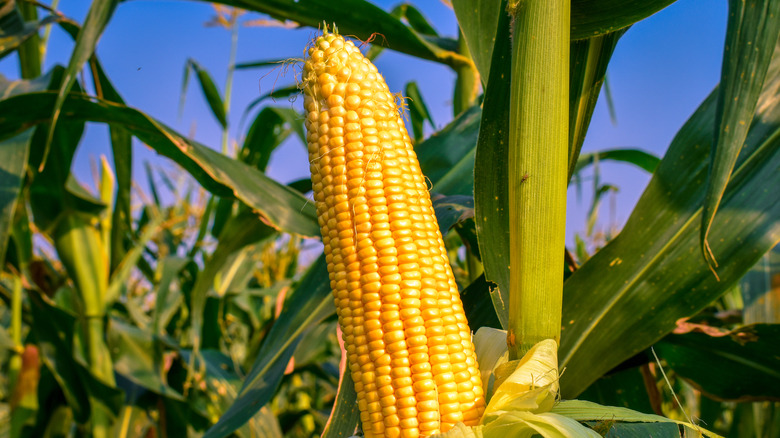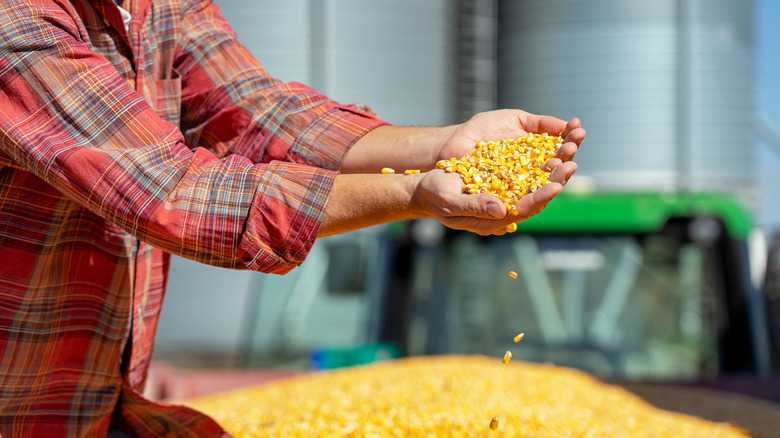Why The Upcoming US Corn Harvest Will Be A Major Disappointment
If you pay even the slightest bit of attention to the ingredient labels on food products in the U.S., you'll know that corn is everywhere.
Corn is incredibly versatile as a food, and easy to grow efficiently as a crop. This is no lucky coincidence — decades of federally-funded research, selective breeding, and genetic engineering have created the corn as we know it today. With its by-design efficiency, it is the most ubiquitous crop in the U.S. (via Scientific American).
Not only can corn be a tasty snack in its sweet-and-crunchy kernel form, but it can be converted into a whole lot more by changing its form or by isolating its parts. It's the star ingredient in countless products, from corn flour, cornmeal, grits, and popcorn, to corn oil, high fructose corn syrup, and even biofuel (via Britannica).
With the vital role it plays in the American food production system, the upcoming yield of the crop is going to pose quite a problem for supply chains.
The ill-fated future of corn production
The real cost of relying so heavily upon a singular crop is about to be revealed, as the U.S. is projected to harvest its smallest yield of corn since 2019. According to Farm Journal Inc. (via Bloomberg), the corn harvest is set to come out at just under 13.8 billion bushels, which is 4.2% less than the USDA's forecast. With the cost of growing corn (e.g. high fertilizer prices) currently outweighing the benefits, farmers are now devoting fewer acres to the crop.
With the vital role that corn plays in the global food system, the prediction for the crop is disappointing at least, and dismal at most. As we all know, food inflation has reached historic highs in 2022 (via World Economic Forum), and an abundance of corn could have helped ease those staggering inflation rates by lowering input costs. However, with the foreseeable limited supply of corn, that no longer seems likely.

